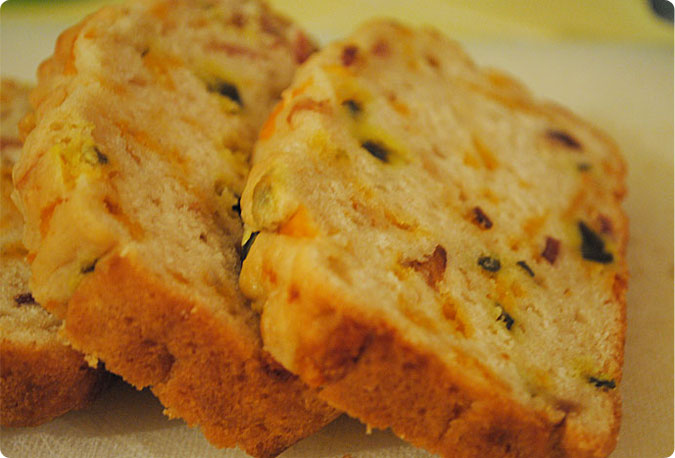Daring Bakers: Cinnamon Rolls with Peach Preserves & Cream Cheese Icing
I made these rolls, took pictures and began this post a couple weeks ago since I was expecting a baby mid-June. I cannot believe I am actually posting this month! Special thanks to my amazing friend, Carrie, who held my sweet baby boy and also entertained my toddlers and therefore made it possible for me to finish this post this morning! You’re amazing 🙂
Our baby’s due date was June 19, so I knew I had to get this challenge completed before my typical completion of a Daring Bakers challenge, a day or two before posting. The day I made these rolls I thought, “It will be good to have these for our house guests after the baby comes.” thinking that this baby would be early like our other two. But over a week passed before our sweet baby arrived and we’d already finished off a pan! I froze the other pan after baking it so we did have some for grandparents when they came to see the baby.
And here he is! Christopher was born on June 23 and we love him.
This month the Daring Bakers kept our creativity rolling with cinnamon bun inspired treats. Shelley from C Mom Cook dared us to create our own dough and fill it with any filling we wanted to craft tasty rolled treats, cinnamon not required!
This challenge had me excited from the moment I read it! I love cinnamon rolls, both the making of and the consumption of them. But I’ve never ventured beyond the traditional cinnamon sugar filling. This challenge encouraged creativity from the Daring Bakers. I know some people got incredibly creative, and I admire those people for not only having creative minds but for being brave enough to try something new! I played it pretty safe and just added peach preserves to the rolls. I know, it’s kinda lame. But it’s still super delicious!
I used a sweet dough recipe from America’s Test Kitchen as the base for the rolls. In the cookbook this dough is also used for hot cross buns and sticky buns. It comes together nicely, rises well, is easy to roll out and handle, and bakes into a lovely sweet bread. It’s a keeper.
Peach just seemed like a good summer choice, but you could use any kind of jam or preserves in these rolls. Add in nuts if you like. Or leave out the jam and make a simple cinnamon roll with a traditional cinnamon and brown sugar filling.
The icing is sweet with just enough tang from the cream cheese. You can make it more icing-like by adding less milk, or more like a glaze by adding a little more. The recipe below makes a generous amount for the 2 pans of rolls. Ice these when they are still a little warm so that the icing can seep in between the layers and get all wonderfully gooey. Or you can ice them individually to control the amount of icing on each roll since some people are big icing lovers and others are crazy not so much.
Peach Cinnamon Rolls with Cream Cheese Icing
Adapted from America’s Test Kitchen Family Cookbook
Ingredients
Dough
- 3/4 cup buttermilk
- 6 tablespoons butter, melted and cooled
- 3 eggs, lightly beaten
- 4 1/4 cups flour
- 1/4 cup sugar
- 2 1/4 teaspoons instant yeast
- 1 1/4 teaspoon salt
Filling
- 3/4 cup brown sugar
- 1 1/2 teaspoons cinnamon
- 3 tablespoons melted butter
- 3/4 to 1 cup peach preserves
Icing
- 5 tablespoons cream cheese
- 1 1/2 cups powdered sugar
- 3-5 tablespoons milk
Directions
Dough
- Whisk the buttermilk, butter and eggs in a small bowl.
- Mix 4 cups of flour, sugar, salt and yeast in stand mixer fitted the dough hook.
- Add buttermilk mixture to flour, mix on low until dough comes together.
- Increase speed to medium low and knead until dough is smooth and elastic, about 10 minutes. Add extra flour if dough seems sticky, one tablespoon at a time.
- Turn dough out onto clean counter and knead by hand to form a smooth round ball.
- Place dough in oiled bowl, cover and let rise for 2 to 2 1/2 hours until doubled in size.
Fill, Shape and Bake Rolls
- Mix brown sugar and cinnamon in a small bowl and set aside.
- Turn dough out onto a floured surface and dust lightly with flour. Pat the dough fat, and then use a rolling pin to roll dough out into a 12×16 inch rectangle.
- Brush dough with melted butter, then spread with peach preserves leaving a 1/4 inch edge all around. Sprinkle brown sugar mixture over the preserves and spread out.
- Roll dough into a long cylinder, as tight as you can get it. Pinch the edge of the dough to seal the roll.
- Use a serrated knife to carefully cut into 14-16 buns.
- Butter 2 round cake pans and place 7 or 8 buns in each. Cover with plastic wrap that has been sprayed with non-stick spray and let rise for about 1 to 1 1/2 hours. Rolls should be pressed up against each other. To Make Ahead: Pop them in the fridge after covering, before they rise. Keep them there for up to 16 hours. When you’re ready, take them out and let them rise at room temp for 1 1/2 hours, then bake as below.
- Preheat oven to 350°F.
- Bake rolls for 25-30 minutes, until golden brown and puffed.
- Let rolls cool for 10 minutes before icing.
Icing (make while rolls are baking)
- Beat cream cheese and powdered sugar until mixed well. Add in milk, a tablespoon at a time until the icing is the consistency that you like.
- Ice rolls in the pan or turn rolls out and ice on a platter.




















































